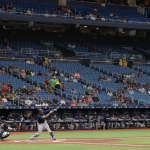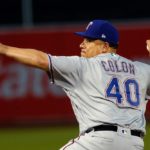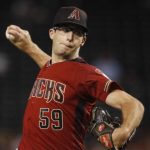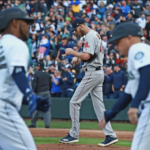Remember Harmon Killebrew? Twins on the Rise
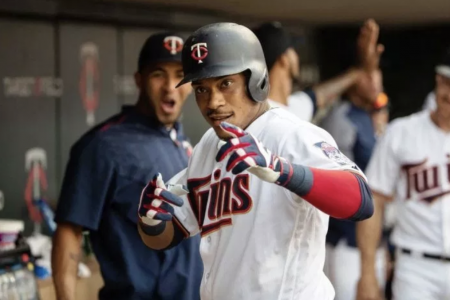 The Minnesota Twins (remember Harmon Killebrew?) have played their 42nd game, 25 percent of a baseball season, and have the second-best record in the American League behind Houston. Pretty good for a team that plays in the same division as the Cleveland Indians, for years considered the best team in a weak division.
The Minnesota Twins (remember Harmon Killebrew?) have played their 42nd game, 25 percent of a baseball season, and have the second-best record in the American League behind Houston. Pretty good for a team that plays in the same division as the Cleveland Indians, for years considered the best team in a weak division.
But over the last year as Minnesota has added new talent, Cleveland has suffered injuries. Pitchers Mike Clevinger and Corey Kluber are out indefinitely, and they’ve lost production from previously reliable offensive bulwarks (like Francisco Lindor and Jose Ramirez) while spending little money to buttress their other weaknesses. The result, a team ill-prepared to cope with the undercurrents of a long season.
And Now This Season
This season, the Twins have already hit the third most home runs in baseball while, ironically, slamming the fewest singles in the American League. But that’s baseball today. Home-run crazy.
Now, a quiz. Who are Jorge Polanco and Byron Buxton? Or Jose Berrios, Kyle Gibson or Jake Odorizzi?
They’re the key performers on the Minnesota Twins. Polanco is Minnesota’s shortstop with a 1.022 OPS and 2.7 WAR and Buxton is their center fielder with a decent .836 OPS and 1.6 WAR.
The other three players are starting pitchers on what is one of the American League’s best rotations. A pitching rotation that has improved dramatically enough to drive the Twins surprising first weeks of the season.
And Behind the Scenes … Analytics
The wonder of the new Minnesota Twins has been their ability to find impact pieces and recalibrate existing talent. What Cleveland’s VP and President of Baseball Operations Chris Antonetti has failed to prepare for. Hence, Cleveland’s poor start.
Credit must be given to Minnesota’s dynamic duo of Derek Falvey, SVP, Chief of Baseball Operations, and Thad Levine, the General Manager. They are following the relatively recent “Moneyball” blueprint of baseball success. And success they have found, restoring Minnesota to its heady heydays of Zoilo Versalles, Harmon Killebrew and Jim Kaat in the 1960s, and Kirby Puckett and Jack Morris in the 1980s when the Twins were a team to be reckoned with.
The “Moneyball” idea, to conserve payroll by finding undervalued talent before the players break out, has been taken to a new level of artistry by the Tampa Bay Rays whose startling regularity and success over the past few seasons has catapulted them to the highest echelons of the American League. The Twins seem to be following that same path.
The other, more conventional side of the equation is to draft young talent and then develop it for the major league roster. Remember Harmon Killebrew?
The key idea on both sides is that even the smallest transaction, or the lowest draft choice, is important since no one can foresee crippling injuries or even prolonged slumps when the need for greater depth will be paramount to winning.
For further evidence of this, see the New York Yankees, the 2019 edition.
More to the point, in Minnesota, there has been a change in philosophy. Falvey and Levine have actively introduced analytics into performance enhancement programs for pitchers and hitters.
The Effect on Pitching
Individual throwing programs have been crafted for Minnesota pitchers who then work in close conjunction with Wes Johnson (a first-time Pitching Coach in the majors after years implementing analytic programs at the college level), and Jeremy Hefner, the Assistant Pitching Coach, on the specifics and implementation of a personalized approach. The result, so far, Minnesota is allowing less than four runs per game for the first time since 1973, when the DH was introduced.
Toss in, first pitch strikes. Getting ahead in the count. And fewer free passes. Many pitchers sing the praises of strike one, saying it’s the most important way to begin an at-bat. For a pitcher. The Minnesota staff has learned several of these lessons in 2019.
They have risen from the dead (13th in the league last year) on first-pitch strikes to second this year. Which means the Minnesota pitchers are dictating. Setting hitters up. Breaking hitters’ rhythm. And in accordance with this, the staff has dropped from 14th in strike percentage to fifth in the American League. It would naturally follow that as strike-throwing has improved, Minnesota has issued fewer walks. And it has. Minnesota is now fifth in fewest bases on balls (moving up from 13th last season).
No wonder the Twins have become a winning ball club.
Add to this their starting pitchers fall between 25 and 31 years old, meaning they are in the prime of their careers. Not old, not young. But ready. And if this year is an example, just as the Minnesota starters have begun to strike fear into the hearts of American League hitters, Minnesota’s hitters have treated pitchers with disdain and a profound lack of respect. Remember Harmon Killebrew?
This coordinated approach, combined with hitting analytics has the Twins off to a 27-15 start. That’s .643 baseball. Winning baseball. Teams that have won 25 of their first 40 games, or 100 or so wins equated to a 162-game, full-season, usually good enough to make the postseason tournament as more than a wild card team.
All of this has resulted in a certain euphoria in the Twin Cities. And why not, with a weakened Cleveland Indian squad, it’s time for a change in the division. And Minnesota seems like a good bet to not so quietly change the balance of power in the American League Central. They’ve already begun. Remember Harmon Killebrew?
_______________________________
For a detailed discussion see:
How MLB’s Biggest Surprise Team Transformed Its Pitching Culture QUICKLY
by TOM VERDUCCI
SI.com.13May2019
https://www.si.com/mlb/2019/05/13/minnesota-twins-pitchers-baseball-predictions
